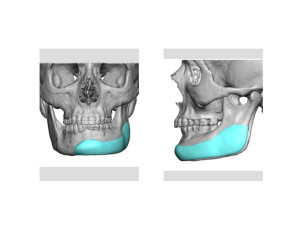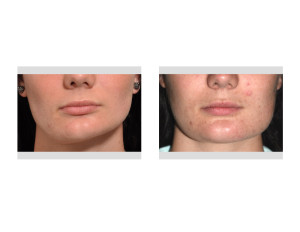Background: Symmetry of the lower third of the face, and the jawline specifically, is one of the most important components of facial aesthetics. Asymmetry in the jawline can occur in any of its components from the chin, body or ramus of the mandible. Differences in lengths of the ramus due to development is one of the major causes of jaw asymmetry. Since much of jaw growth comes from the condyle, it is not surprising that the adjoining ramus would be most commonly affected.
There are a variety of well known and classic jaw developmental abnormalities. Hemifacial microsoma is when one side of the jaw fails to develop properly and the face deviates towards the shorter side. Hemifacial hypertrophy, which is far more rare, occurs when one side of the jaw develops an overgrowth. The face is still very asymmetric but the face twists less and one side of the face looks more full although not necessarily deviated like that of hemifacial microsomia.
In extremely rare cases, both sides of the jaw are affected asymmetrically. One side of the jaw is demonstrably shorter while the other side is clearly longer. The exact cause of this type of growth disturbance is unclear although it is likely more of a lower jaw hypertrophy compared to a perhaps normal but naturally shorter opposite side.
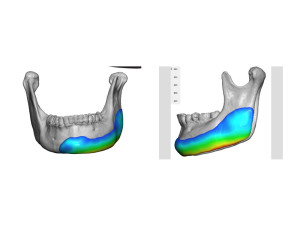
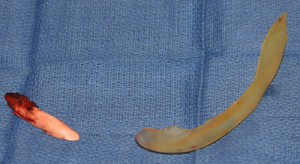
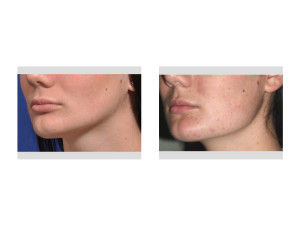
Jaw asymmetry correction requires a 3D scan and computer imaging to determine the optimal surgical methods for both sides. When the procedure should be done through an exclusive intraoral approach.
Highlights:
1) Jawline asymmetry can be caused by a vertical shortening or lengthening of one side of the jawline or a combination of both.
2) In bilateral jawline asymmetry lengthening of the shorter side and shortening of the longer side is needed for jaw asymmetry correction.
3) Jawline lengthening is best done with a custom made implant. Shortening of the longer side must take into account the location of the inferior alveolar nerve.
Dr. Barry Eppley
Indianapolis, Indiana



